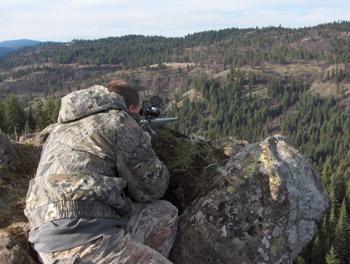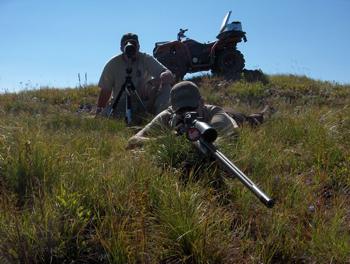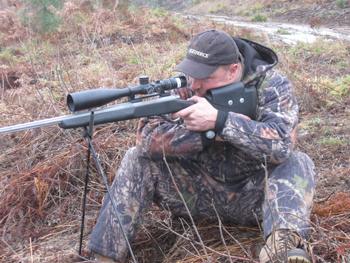10 Ways To Stronger Rifle Field Shooting Positions
By Shawn Carlock
After having spent years in the hunting fields, rifle competitions, and training arenas, I have noted that a high number of missed "field" shots in these conditions were the result of unstable or flat out poor shooting positions. Now, in the areas of hunting, rifle competition, and training, your field shooting position will often be far from ideal. However, there are things you can do to raise your first round hit percentage by improving your shooting position.
1. Get your rifle as close to the ground as possible. The higher your body and your rifle are up in the air, the less stable you typically are. Not all field positions allow you to be right on the dirt, but be there whenever you can. Even if you do not use a bipod on your rifle, simply being prone and unsupported is a better position than sitting, kneeling, or leaning against a tree. The closer you and your rifle are to the dirt, the more stable you will be. Now, getting low may not always be possible, so be prepared for other unique field shooting positions, but try to stay low whenever possible.

2. I use a bipod on my rifle whenever I can. In keeping with my preference for being low, I use my low benchrest bipod when ever possible. My preference is for the Harris "S" series with a pod loc. With this, I can even from the standard crappy hunting position get the rifle locked in level using the lock and the Anti Cant Device. It has been my preference whenever possible to have the rifle's front end supported, so all I have to worry about is the rear of the rifle.

3. While I like to be low, it is not always possible, and while I like bipods on my rifles, they will at times not allow the shot to be made. I am not a huge fan of shooting sticks. I'd much rather be low to the ground, but sometimes that is just not possible. When the only way to get the shot is to take a high position, I break out the sticks. I have practiced with shooting sticks quite a bit, and while they help the high position a great deal, I cannot shoot as far effectively with them as I can with a bipod.

By Shawn Carlock
After having spent years in the hunting fields, rifle competitions, and training arenas, I have noted that a high number of missed "field" shots in these conditions were the result of unstable or flat out poor shooting positions. Now, in the areas of hunting, rifle competition, and training, your field shooting position will often be far from ideal. However, there are things you can do to raise your first round hit percentage by improving your shooting position.
1. Get your rifle as close to the ground as possible. The higher your body and your rifle are up in the air, the less stable you typically are. Not all field positions allow you to be right on the dirt, but be there whenever you can. Even if you do not use a bipod on your rifle, simply being prone and unsupported is a better position than sitting, kneeling, or leaning against a tree. The closer you and your rifle are to the dirt, the more stable you will be. Now, getting low may not always be possible, so be prepared for other unique field shooting positions, but try to stay low whenever possible.

2. I use a bipod on my rifle whenever I can. In keeping with my preference for being low, I use my low benchrest bipod when ever possible. My preference is for the Harris "S" series with a pod loc. With this, I can even from the standard crappy hunting position get the rifle locked in level using the lock and the Anti Cant Device. It has been my preference whenever possible to have the rifle's front end supported, so all I have to worry about is the rear of the rifle.

3. While I like to be low, it is not always possible, and while I like bipods on my rifles, they will at times not allow the shot to be made. I am not a huge fan of shooting sticks. I'd much rather be low to the ground, but sometimes that is just not possible. When the only way to get the shot is to take a high position, I break out the sticks. I have practiced with shooting sticks quite a bit, and while they help the high position a great deal, I cannot shoot as far effectively with them as I can with a bipod.


